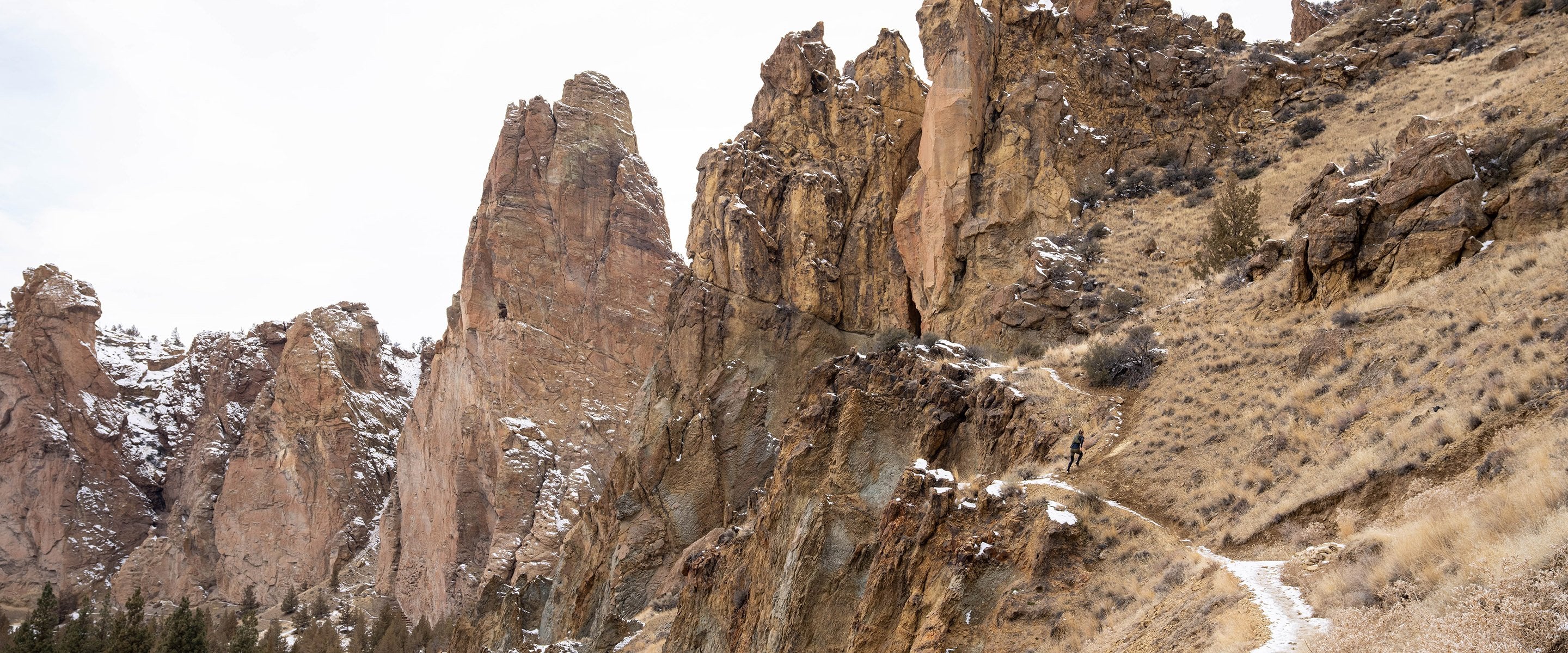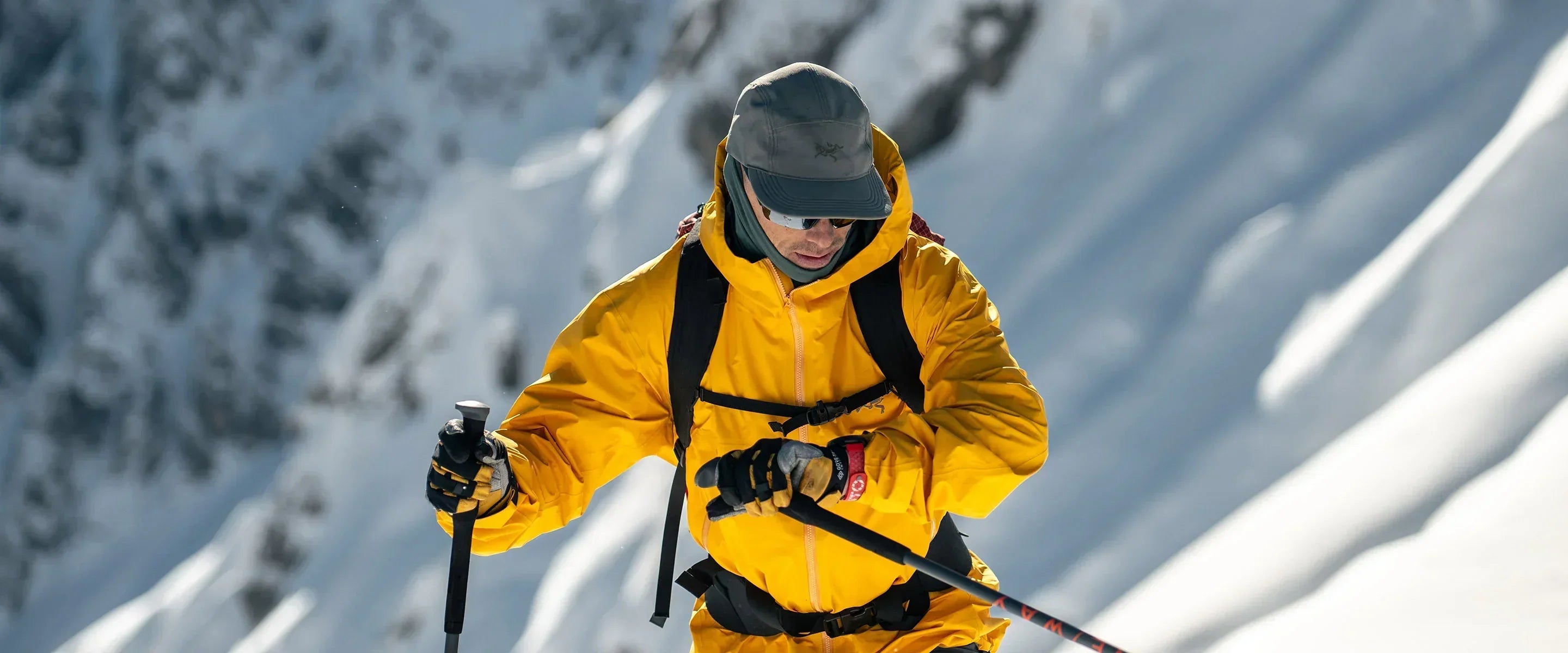

SUUNTOブログ

Over 50 events, 1 passion: Your guide to the 2025 UTMB World Series
The 2025 UTMB World Series is more exciting than ever with new destinations, the legendary challenges, and Suunto supporting athletes and fans alike.
The trail running world is set for another epic year as the 2025 UTMB World Series expands to over 50 events across 28 countries and five continents, bringing the spirit of adventure and community to runners everywhere.
As an official partner of the UTMB World Series, Suunto is proud to be on-site at most of these events, supporting athletes, showcasing our latest products, and inviting the community to join shake-out runs in the lead-up to race day. Whether you're toeing the start line, cheering from home, or meeting us at the expo, we’ll be there to share the journey.
From iconic landscapes to new territories, here’s what’s ahead in the 2025 season.
Eleven new events
The 2025 calendar introduces eleven exciting new races, expanding the series into new regions and offering runners even more ways to connect with the global trail scene. From windswept Cornish coastlines to the remote Chilean wilderness, these events bring fresh terrain and culture to the series.
Here’s the full list of new races joining the series:
Europe
Arc of Attrition (UK) – Jan 24–26Grand Raid Ventoux (France) – Apr 25–27Monte Rosa Walser Waeg (Italy) – Jul 18–20Kaçkar (Türkiye) – Sep 26–28Puglia (Italy) – Nov 7–9
Asia
Ultra-Trail Xiamen (China) – Mar 1–2Ultra-Trail Great Wall (China) – May 16–18Kaga Spa Trail Endurance 100 (Japan) – Jun 19–22
South America
Torrencial Chile – Jun 19–21Chihuahua (Mexico) – Oct 2–4Patagonia Bariloche (Argentina) – Nov 18–22
See the full 2025 UTMB World Series race calendar here.
Four majors, four chances to double your Stones
The UTMB World Series Majors are the pinnacle events of the season on each continent. These are the only races where athletes can double their Running Stones, increasing their chances of qualifying for the UTMB World Series Finals in Chamonix.
Running Stones are the official currency of the UTMB World Series qualification system. Runners earn them by finishing UTMB World Series races. The more Running Stones a runner collects, the more chances they have in the lottery to enter the UTMB World Series Finals in Chamonix.
In 2025, the Majors are:
Oceania Major: Ultra-Trail Australia – May 15–18
Europe Major: Val d'Aran – July 2–6
America Major: Kodiak Ultra Marathons – October 10–11
Asia–Pacific Major: Chiang Mai Thailand – December 5–8
All roads lead to the finals in Chamonix
The UTMB World Series season culminates in one extraordinary week in Chamonix, France, where the UTMB World Series Finals take place from August 25–31, 2025.
The three Finals are:
OCC (50K)
CCC (100K)
UTMB (100M)
Alongside these Finals, other events like the TDS, MCC, ETC, YCC, and the legendary PTL will fill the week with unforgettable moments, camaraderie, and trail running excellence.
Watch the season unfold live
Want to follow the drama as it happens? 12 races will be broadcast live in 2025 through UTMB Live. The UTMB Live season already started with the live streams of Chianti Ultra Trail and Tenerife Bluetrail in March.
Up-coming livestreamed races include:
Ultra-Trail Australia (Oceania Major)
Val D'Aran
Trail Verbier St-Bernard
Monte Rosa Walserwaeg
Eiger Ultra Trail
UTMB Mont Blanc (Finals)
Wildstrubel
Nice Côte d'Azur
Kodiak Ultra Marathons (America Major)
Chiang Mai Thailand (Asia–Pacific Major)
With coverage in multiple languages, drone footage, runner-mounted cams, expert commentary, live stats, and behind-the-scenes interviews, UTMB Live offers an immersive way to experience the races no matter where you are.
Even when races aren’t livestreamed, you can still follow the action in real time on live.utmb.world. The platform provides GPS tracking and real-time leaderboards optimized for mobile so you can check in from anywhere.
Suunto: Your partner on the trail
In 2025, we’ll be right there with you at most of the events – cheering you on at race expos, running side by side at shake-outs, and celebrating your finishes.
See you on the trails!
Read more
Pace your race with Abby, Iris and Dakota
Learn from your run with Hannes Namberger
Ultra running mantras: Mental fuel for the long haul

Your Suunto is ready for any sport
Here’s the full list of activity types supported by your Suunto watch – plus how to track any new ones you may come up with.
At Suunto, we believe in adventure. That’s why our products are built to be versatile, ready for whatever challenge you take on.
When tracking different activities, two key terms are important to understand: activity types and sport modes.
Activity types define the general nature of movement. Common examples include running and cycling. These serve as the foundation for training summaries in the Suunto app.
Sport modes are specific configurations within an activity type, tailored to different workouts or environments. For example, an interval running session requires different data fields than a long endurance run. Sport modes determine what metrics (e.g., heart rate, speed, power, altitude, lap data) are displayed on your watch, what kind of screen layouts are used, and whether external sensors (e.g., heart rate belts, power meters) are connected. Your Suunto watch comes with dozens of ready-made sport modes, but you can also customize your own in the Suunto app.
When you start an activity on your Suunto watch, you select a sport mode (e.g., "Interval Running"). Once synced to the Suunto app, the recorded data is categorized under an activity type (e.g., "Running"). You can also edit the activity type in the Suunto app if needed (e.g., changing "Running" to "Trail running").
Update: March 2025 – New activity types added
One of the new activity types is Splitboarding. (Image by Jaakko Posti / Arctic Lines)
We’ve expanded our supported activity types to better match the ways you move. Some of the new ones are:
Cross-country skiing: Now split into Skate skiing and Classic skiing, so you can track each discipline separately. Prefer a general category? The existing Cross-country skiing type remains. Also, Biathlon is added as its own activity type.
Backcountry skiing & Ski mountaineering: Perfect for adventurers exploring the mountains and backcountry.
Splitboarding: Gliding on snow isn’t only for skiers. Snowboarders can now track their human powered endeavors as Splitboarding.
Yoga & Pilates: Track your practice with more precision.
Wheelchair & Handcycle: Whether you're training or commuting, you can now log your wheelchair or handcycling activities.
E-Biking & E-MTB: Separate your electric-assisted rides from traditional cycling sessions.
Chores: From mowing the lawn to shoveling snow, track everyday physical activity and get insights into your overall workload.
What happens to your statistics when new sports are added?
Track running is still running in your Suunto app summary data. (Image by Phil Gale, Soar)
How can you track your overall running or skiing kilometers in the future? If you record cross-country skiing as "skating," the summary tool in the Suunto app will list it separately from "classic skiing." The same applies to different types of running – track running, treadmill running, running, and trail running all appear as separate sport types.
However, in the Training Zone in Suunto app, total running load combines all types of running into a single metric. This means you can track new sports both individually and as part of a larger category, giving you flexibility in how you analyze your training.
Full list of Suunto activity types
(Latest additions in bold)
Running
Trail running
Vertical run
Track running
Walking
Hiking
Trekking
Nordic walking
Mountaineering
Cycling
Gravel cycling
Cyclocross
Mountain biking
E-biking
E-mtb
Cross country skiing
Skating skiing
Classic skiing
Snowboarding
Ski touring
Ski mountaineering
Backcountry skiing
Split boarding
Telemark skiing
Alpine skiing
Biathlon
Snow shoeing
Ice skating
Ice hockey
Golf
Soccer
Tennis
Basketball
Badminton
Baseball
Volleyball
American football
Table tennis
Racquet ball
Squash
Ball games
Floorball
Handball
Softball
Bowling
Cricket
Rugby
Frisbee golf
Futsal
Padel
Field hockey
Gym
Fitness class
Indoor
Indoor cycling
Treadmill
Crossfit
Crosstrainer
Indoor rowing
Stretching
Combat sport
Kettlebell
Dancing
Aerobics
Circuit training
Gymnastics
Boxing
Cheerleading
Calisthenics
Yoga
Pilates
Meditation
Multisport
Triathlon
Adventure racing
Obstacle racing
Paragliding
Track and field
Orienteering
Climbing
Parkour
Outdoor gym
Roller skating
Roller skiing
Skateboarding
Horseback riding
Motorsports
Swimming
Paddling
Rowing
Standup paddling
Sailing
Kayaking
Open water swimming
Windsurfing
Kitesurfing kiting
Canoeing
Surfing
Water sports
Scuba diving
Freediving
Mermaiding
Snorkeling
Fishing
Hunting
Wheelchair
Hand cycling
Chores
What if your favorite activity isn’t listed?
No problem! You can still track it:
Create a custom sport mode
Build a Custom sport mode in the Suunto app to see exactly the metrics you want during the session.
Use "Other" as the activity type, or use an existing activity type (e.g., a new sport mode for running).
Use tags for better organization
After syncing your activity to the Suunto app, go to "Edit" → "Add tag."
Tags help categorize activities. For example, you can tag all races with "Race" or specific workouts with "Intervals."

Breaking barriers: The women redefining what's possible
Some barriers are visible, others unspoken – but all are meant to be broken. These three women prove that strength is as much about mindset as muscle.
Every day, women are breaking barriers, proving their strength, and setting new standards in their sports. Suunto is proud to support and celebrate these trailblazers who push limits and inspire others to do the same. Here, we spotlight three incredible athletes featured in our latest film—each with her own journey of perseverance, passion, and dedication.
Emily Reynolds
Although many aspects of Emily’s life have changed over the years, her connection to the water has remained constant. From competitive swimming pools in Maryland and Georgia to the vast Pacific Ocean in Hawai'i, Emily’s passion has expanded beyond swimming to include scuba diving, snorkeling, and surfing. For her, the ocean offers both mental escape and physical challenge. Her years of competitive swimming have built the endurance to swim miles of open ocean, where she’s crossed Hawaiian island channels and swum alongside dolphins, turtles, rays, and even whales.
The Suunto Aqua bone conduction headphones have become an essential tool for her, providing crystal-clear sound even underwater, allowing her to stay motivated and focused during her open-water swims.
Emily's journey is deeply intertwined with her love for the ocean and the powerful community of women who share her passion.
Robin Vieira
For Robin, running is about more than just logging miles—it’s about finding clarity in the mountains and pushing her limits through skyrunning. Tackling technical terrain, high altitudes, and unpredictable conditions requires endurance, strategic decision-making, and resilience.
The Suunto Race S watch plays a crucial role in her training, offering precise GPS tracking, altitude measurements, and performance metrics that empower her to make quick, informed decisions on the mountain.
As a woman in this space, Robin hopes to inspire others to step outside their comfort zones and embrace trails that challenge them to build skill, strategy, and adaptability. For her, true strength isn’t just about fitness; it’s about reading the mountain, trusting her instincts, and moving forward with unwavering confidence.
Kimi Werner
Kimi Werner’s connection to the ocean runs deep. As a Hawaiian spear fisherwoman and freediver, she’s spent her life exploring the underwater world, embracing its beauty, and respecting its power. Her journey is about more than just the catch—it’s about immersing herself in the environment, finding harmony with nature, and pushing her own boundaries. Whether she’s diving along vibrant coral reefs or hunting sustainably to provide for her family, Kimi’s approach to her craft embodies a profound respect for the sea.
The Suunto Ocean watch has become an essential part of her gear, offering reliable depth tracking, dive logs, and precise underwater navigation to ensure her safety and enhance her exploration. Her dedication to her sport continues to inspire others to forge their own path in and out of the water, embracing the challenges and beauty of the natural world.
These women continue to show us what’s possible when you push past your limits and follow your passions. We’re excited to share their stories and celebrate the incredible journeys they’re on. Stay tuned for more from Emily, Robin, and Kimi with content in our social channels each Wednesday this month.

Suunto Vertical Week 2025 reached new heights!
The 11th annual Suunto Vertical Week was bigger than ever, bringing the community together for an epic challenge. Now, the results are in – see who climbed to the top!
From March 3–9, we challenged you to rack up as many vertical meters as possible. Once again, we set out to determine which nation and which activity type climbed the most. The data from the Suunto app is in – here are the results!
This year, you also had the chance to participate on Strava and support Protect Our Winters through the Vertical Week Strava Challenge. Our goal was to reach 1 million vertical meters, but you crushed that target – 121 times over!
We pledged to donate €1 for every 100 meters climbed to Protect Our Winters Europe, up to a limit of 1 million meters, to support their vital work in fighting climate change. Your passion exceeded all expectations – amazing!
Familiar names dominated the country rankings
In the country rankings for the average ascent per session, the usual suspects – nations in Europe’s mountainous regions – once again came out on top. Austria reclaimed the number one spot from Italy, while Switzerland held onto third place.
Average ascent per session by country
Austria – 399m
Italy – 392m
Switzerland – 373m
Slovenia – 346m
Slovakia – 305m
Spain – 273m
France – 271m
Germany – 230m
Czech Republic – 221m
Croatia – 214m
When looking at total ascent from all participants, France secured the top spot, followed by Spain and Italy.
Total ascent by country
France
Spain
Italy
Germany
Austria
Switzerland
Poland
USA
Slovenia
United Kingdom
On an individual level, ten participants climbed over 14,000 meters in a week – averaging more than 2,000 meters per day. Well done!
To make the top 10%, you needed to climb 2,200 meters – 75 meters less than last year but still 300 meters more than in 2023.
For the top 3%, the benchmark was 3,958 meters – 104 meters less than last year but 368 meters more than two years ago.
Ski tourers lead the way
As in previous years, ski tourers dominated. Ski touring was the only activity type where the top three countries averaged over 1,000 meters per session. The overall ski touring average was an impressive 947 meters.
However, when looking at the total number of big '1000-meter days', trail runners recorded the most this time.
The only country with more than one win in the activity type rankings was South Africa: They dominated both the mountain biking and cycling rankings. Congrats!
Ski touring
Austria – 1,044m
Switzerland – 1,036m
France – 1,005m
(All ski touring activities average per session: 947m)
Austria claimed the top spot, dethroning Slovakia, while France moved up to third. The 1000-meter mark remains a clear goal for skiers, with the entire top three surpassing it once again. Germany and Italy followed closely at 987 and 971 meters, respectively.
Mountaineering
France – 968m
Austria – 761m
Italy – 750m
(All mountaineering activities average per session: 633m)
France took a strong category win in mountaineering, with the average ascent for all mountaineering activities remaining exactly the same as last year! (Edit: The top 3 was corrected on March 14 due to an error on our dashboard.)
Trail running
Japan – 805m
Italy – 652m
Portugal – 592m
(All trail running activities average per session: 444m)
Japan continued to lead, though their average was lower than last year – perhaps due to deep powpow this winter?
Mountain biking
South Africa – 490m
Spain – 346m
Slovenia – 297m
(All moutain biking activities average per session: 368m)
South Africa maintained its top position despite a drop in its average from 645m to 490m. Is the country getting ready for the upcoming Cape Epic or what do these strong performances in the MTB rankings tell?
Gravel cycling
Czech Republic – 524m
Switzerland – 505m
Spain – 422m
(All gravel cycling activities average per session: 289m)
A full reshuffling – last year’s top three didn’t return to the podium this year! Is this a sign of gravel cycling still evolving and growing as a sport?
Cycling
South Africa – 490m
Spain – 346m
Slovenia – 297m
(All cycling activities average per session: 172m)
Spain and Slovenia held their ranks, but South Africa stole the show with another category win. Lekker, bru!
Trekking
Spain – 628m
Slovenia – 379m
Italy – 340m
(All trekking activities average per session: 334m)
Trekking had a fresh top 3 with Spain clearly taking the win.
Hiking
Slovenia – 555m
Portugal – 529m
Spain – 496m
(All hiking activities average per session: 235m)
Slovenia delivered strong performances across multiple categories this year: number one in hiking but also top three in mountain biking, cycling, and trekking. Kapo dol!
Cross-country skiing
Italy – 340m
Czech Republic – 325m
France – 322m
(All XC skiing activities average per session: 227m)
Unlike other activities, cross-country skiing was the only one where the average ascent increased from last year.
Running
Norway – 123m
Switzerland – 122m
Belgium – 119m
(All running activities average per session: 82m)
This was the closest battle of all, with Norway edging out Switzerland by just half a meter! The average ascents in Suunto’s most popular activity type, running, are not huge but that makes the battles even more exciting!
See you next year!
Vertical Week 2025 proved once again that the Suunto community is unstoppable. Whether you were ski touring in the Alps, trail running in Japan, or cycling in South Africa, your dedication made this event one for the record books.
See you next year – until then, keep climbing!

Chianti Ultra Trail by UTMB
The trail running season is finally starting again! The first unmissable event is the Chianti Ultra Trail by UTMB, taking place from March 20 to 23.
The 2024 edition was a record-breaker, with over 3,600 participants from 72 nations and more than 10,000 visitors over the three thrilling days of races.
© Jose Miguel Munoze
What makes this event truly special is its unique setting: the Chianti hills — candidates to become a UNESCO heritage site — renowned for their stunning natural beauty, medieval villages, vineyards, and forests.
The races unfold amidst this breathtaking landscape, once again attracting athletes from around the world.
Our Suunto athletes are ready to give it their all, including Italians Andreas Reiterer — last year’s winner of the most challenging race, the Ultra Trail Chianti Castles (120 km and +5200 m of pure passion and talent) — alongside Davide Cheraz and Mattia Bertoncini. Also competing are Ugo Ferrari and Alban Berson (FR), Dominika Stelmach (POL), Tomas Farnik (Czech Republic), and Abby Hall and Ryan Montgomery (USA).
Suunto will be at the event village with a booth, where our team will be happy to share the latest brand news and showcase our products.
But that's not all — join the COMMUNITY RUN in collaboration with Näak! Experience the thrill of running 5 km through the Chianti hills and enjoy a snack at the end of your workout.
Community Run Program — Saturday, March 22
14:30: Departure from the Suunto booth
5 km route through the Chianti hills
15:30 (approx.): Arrival at the Näak booth
Post-run snack with Näak products and soft drinks
Register now and don’t miss this unique opportunity to test one of our sports watches during the run!
Sign up

Suunto Vertical Week 2025
Suunto Vertical Week is happening 3rd to 9th March! It’s time again to get your lungs burning, your quads trembling and your watch adding up vertical meters, because every meter counts.
During our annual Suunto Vertical Week, we challenge you to get out there and collect those vertical meters. Not only are you doing something good for yourself, but you also have the chance to win some great Suunto prizes simply by participating. And if you’re up for a real challenge, help our community on Strava collect one million vertical meters to support the work of Protect Our Winters Europe. So, choose your favourite activity, get out there and do something good for yourself and start collecting vertical meters.
If you are ready for the challenge, simply go to Suunto app, click “join” in the Vertical Week message that appears in Suunto app and get ready to start climbing. Every vertical meter climbed through muscle-powered activities during the week count towards your total elevation gained.
Know what’s ahead
When preparing for your Vertical Week adventures here’s a few tips to get the most out of your watch.
Download offline maps to make sure you know where you’re going and can see what lies ahead of you. If you are new to an area, check out our activity specific heatmaps in Suunto app to find popular routes or if you’re looking for unchartered territory you can also find a way of going off the beaten path.
Since during Vertical Week everything is focused on going up, make use of Suunto’s Climb Guidance. During the planning phase in Suunto app you can already see which sections will make your legs burn more and where the terrain might allow you a little break. Once your selected route is synced to your watch, you can follow the elevation profile and adjust your efforts accordingly.
In addition, SuuntoPlus Store offers some additional features. You can download the new Vertical Week watch face (available March 3) to your watch or check out the free sports apps available that are perfect for Vertical Week or other ascent-focused adventures. You can for example track your total ascent during Vertical Week with the SuuntoPlus Vertical Week sports app. It will show you your cumulative ascent so far that week as well as the current ascent from the on-going activity. It even gives you a comparison to how high you would be ranked in last year's Vertical Week challenge.
Our big community goal for Protect Our Winters Europe
This year we wanted to further increase the stakes and not just see who can climb the most meters as a country but also can our community work together for a good cause. So we’ve set up a Strava Challenge with the goal of reaching one million vertical meters. For every 100 vertical meters climbed we will be donating 1€ to Protect Our Winters Europe. So get out there, do something good for your body and for the planet, because every meter counts!
Join our “1 million vertical meters with Suunto & POW” challenge on Strava. If you have not yet linked your Suunto app to Strava, here’s how that is done:
How to connect to Strava via suunto app
Connect Strava in Suunto app settingsGo to your Profile > Partner services and connect to StravaLog into Strava. If you do not have a Strava account, register first. Accept that Suunto app can connect to your Strava account.
Ready Now you are connected! After the next workout is synced with Suunto app it will automatically be transferred to Strava. You can remove the connection from Strava or from Suunto app at any stage. See terms and conditions.
Suunto app Vertical Week giveaway
Even if you are not a Strava member, you can support the community by collecting vertical meters in Suunto app. Besides learning which country collects the most vertical meters, in our app we will also be giving away one Suunto Vertical Titanium and five pairs of Suunto Wing headphones amongst all participants. Make sure to click the “Join Suunto Vertical Week” button in your Suunto app inbox and don't miss your chance to be one of the lucky winners! See terms and conditions.










































































